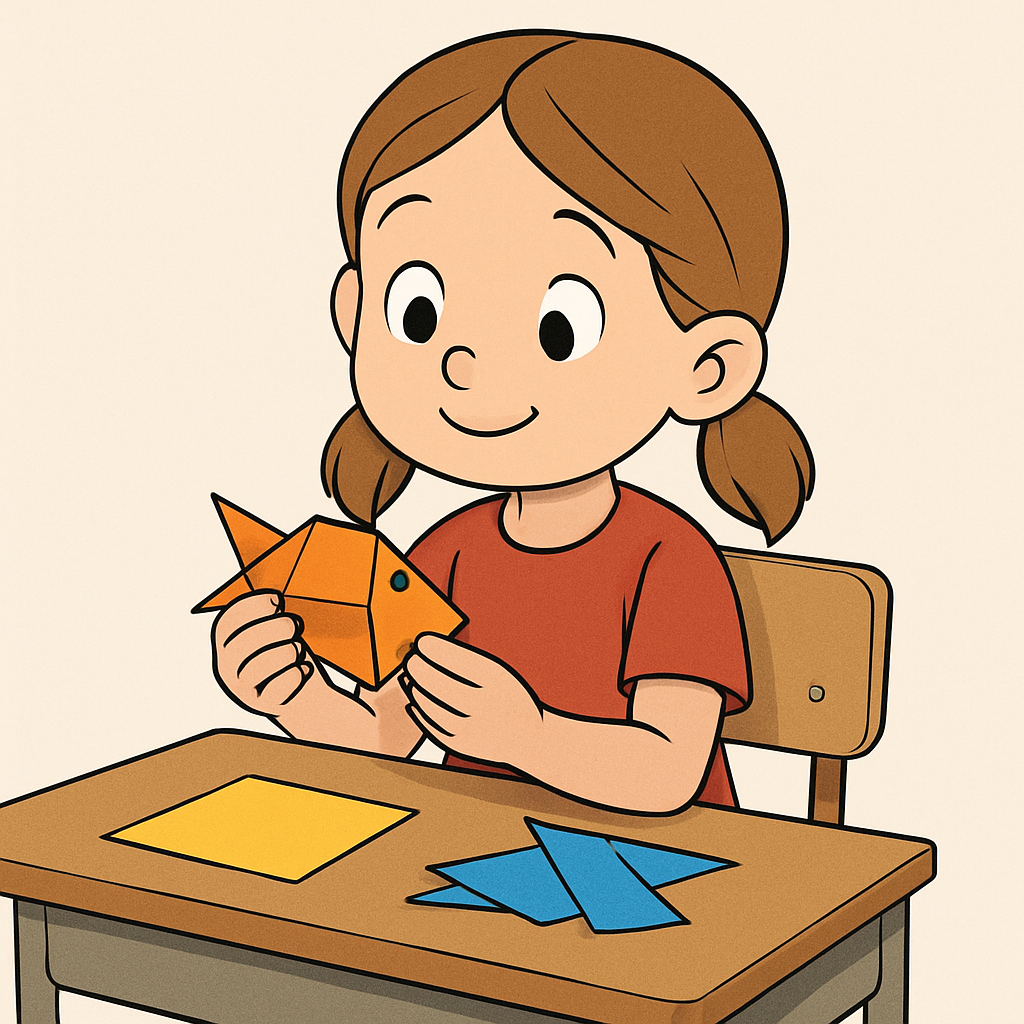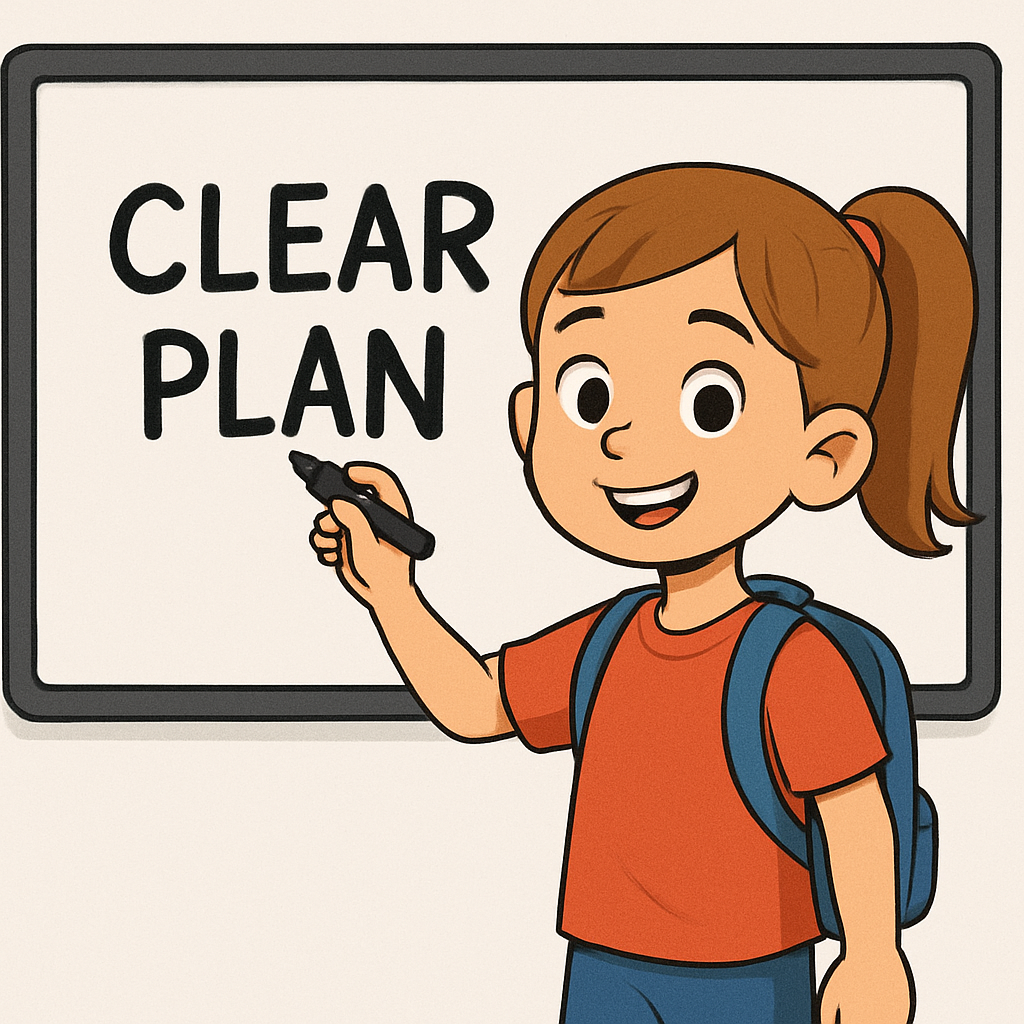This lesson will help your students distinguish the difference between clear and vague instructions and see how each affects a task's outcome.
They'll experience this firsthand by attempting to make an origami paper fish.
First, they'll try to make a paper fish on their own, and then they'll try again with step-by-step instructions.
Begin by handing each pupil a single sheet of paper. Frame the activity as a fun challenge, emphasising that it's designed to be a bit tricky.
Without providing any examples, diagrams, or verbal instructions on how to fold, simply state the goal:
“Your challenge is to fold your piece of paper into the shape of a fish.You cannot tear or cut your page and you cannot draw or colour it! ”
Set a visible timer for the entire class (5 minutes should be plenty). During this time, resist the urge to provide any hints. The purpose of this step is to let students experience the frustration and uncertainty that come from a vague instruction!
After the timer for the first attempt goes off, invite the students to put their paper creations down and gather their thoughts. Before you move on to the next step, guide a brief discussion to capture their immediate feelings and observations.
Ask them a few key questions to get them to reflect on the process:
"How did that feel? What was the hardest part?"
"Did anyone feel frustrated or unsure of what to do next?"
"What did you need to make the task easier?"
As students share their thoughts, jot down a few of their key phrases on the board.
This will serve as a powerful reminder of the problems that arise from a vague instruction, setting the stage for the next part of the lesson where they will receive a clear, ordered algorithm.
Hand a fresh sheet of paper to each student. Explain that this time, you'll provide a clear, step-by-step algorithm to guide them. Tell them to follow your instructions precisely, without guessing ahead. This is a critical moment in the lesson, as your deliberate delivery will demonstrate the power of unambiguous commands.
Read the steps below one at a time, pausing after each one to ensure every student has completed the action before you move on. For the best result, model each fold with your own paper as you speak.
Simple Paper Fish — step-by-step (no cutting/glue):
Bring the class together to discuss their experience. Invite them to hold up their two finished pieces, putting their first, "guesswork" creation side-by-side with their second, "instruction-based" one.
Guide the discussion with a few key questions to help them reflect on the process:
"Let's talk about how this felt. What was easy about the second time? What was tricky about the first attempt?"
"How long did you spend just trying to decide what to do in your first attempt, versus the second?"
"What did the clear instructions give you that you didn't have before?"